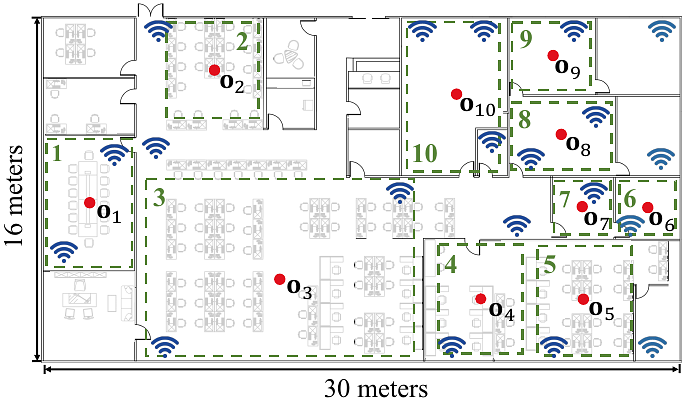Constructing Indoor Region-based Radio Map without Location Labels

Constructing Indoor Region-based Radio Map without Location Labels
Zheng Xing, Junting Chen
AbstractRadio map construction requires a large amount of radio measurement data with location labels, which imposes a high deployment cost. This paper develops a region-based radio map from received signal strength (RSS) measurements without location labels. The construction is based on a set of blindly collected RSS measurement data from a device that visits each region in an indoor area exactly once, where the footprints and timestamps are not recorded. The main challenge is to cluster the RSS data and match clusters with the physical regions. Classical clustering algorithms fail to work as the RSS data naturally appears as non-clustered due to multipaths and noise. In this paper, a signal subspace model with a sequential prior is constructed for the RSS data, and an integrated segmentation and clustering algorithm is developed, which is shown to find the globally optimal solution in a special case. Furthermore, the clustered data is matched with the physical regions using a graph-based approach. Based on real measurements from an office space, the proposed scheme reduces the region localization error by roughly 50% compared to a weighted centroid localization (WCL) baseline, and it even outperforms some supervised localization schemes, including k-nearest neighbor (KNN), support vector machine (SVM), and deep neural network (DNN), which require labeled data for training.